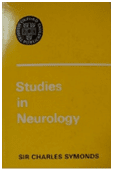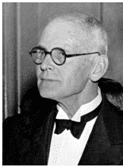

There was a time when medical practitioners in England would refer their difficult cases to a neurologist paid by the health services to come once a week to consult at the local hospital. Faced with a difficult or puzzling case, this consultant neurologist would send the patient to be seen at the National Hospital for Nervous Diseases at Queen Square, preferably by Sir Charles Symonds. If Sir Charles himself was in doubt about the case, it was said that he would seek the opinion of God. But for those living under the preservations of the moon, Sir Charles was the greatest of all neurologists.
Born in 1890 and educated in the best schools and colleges of Britain, he qualified in medicine from Guy’s hospital in 1915, served with distinction in both World Wars, rose to the rank of air vice-marshal, and was knighted in 1946. Practicing neurology at Guy’s and Queen Square at the time when few ancillary diagnostic procedures were available, he excelled as a diagnostician of great clinical skill, high intellect, and deep learning. He was regarded a great teacher. He made many contributions to neurology, to the understanding encephalitis lethargica, to what is now called cluster headaches (which he described as periodic migranous neuralgia and recommended treatment with ergot compounds), to the study of intracranial aneurysms and subarachnoid hemorrhage, idiopathic intracranial hypertension , head injuries, epilepsy, aphasia and the neurologic aspects of psychiatry.
He received many honors and was a member of many distinguished societies. His published collection of many of his papers, Studies in Neurology (1970), was widely acclaimed.
In his obituary he was called “ undoubtedly he most distinguished clinical neurologist in Great Britain in his day (and his day spanned about 40 years, from the late 20s to the late 60s. It is probably for his skill in the clinical diagnosis and his ability as a teacher that he would be best remembered. It would be difficult to put the number to the neurologists (and indeed neurosurgeons) throughout the world whose whole thinking about clinical neurology has been influenced by his teaching and example, and who look back with admiration and gratitude to a great teacher”
Further reading
- Obituary. Lancet December 23&30, 1978.p 1389
- Royal College of Physicians, Lives of the Fellows, Munk’s Roll, Volume VII 1976-1983
- Sir Charles Symonds: Periodic migranous neuralgia, Brain 1956: 79; 217–232 .

Leave a Reply